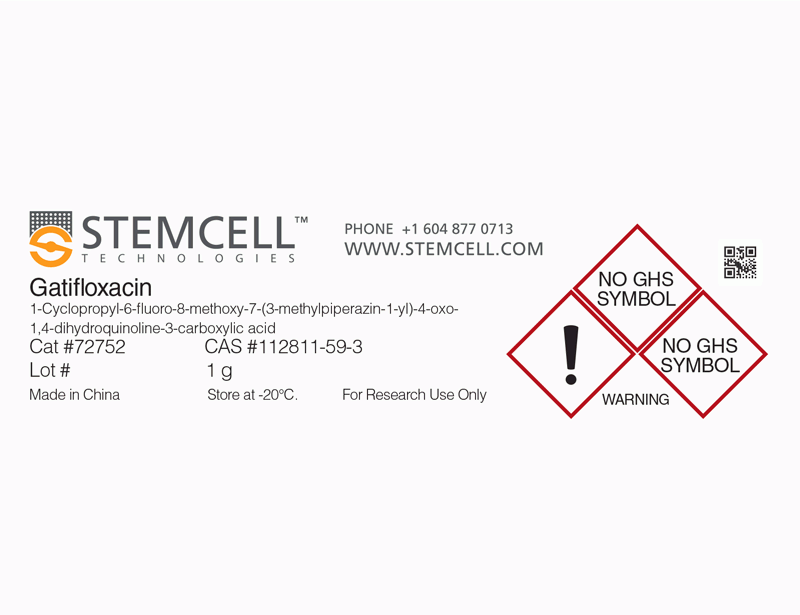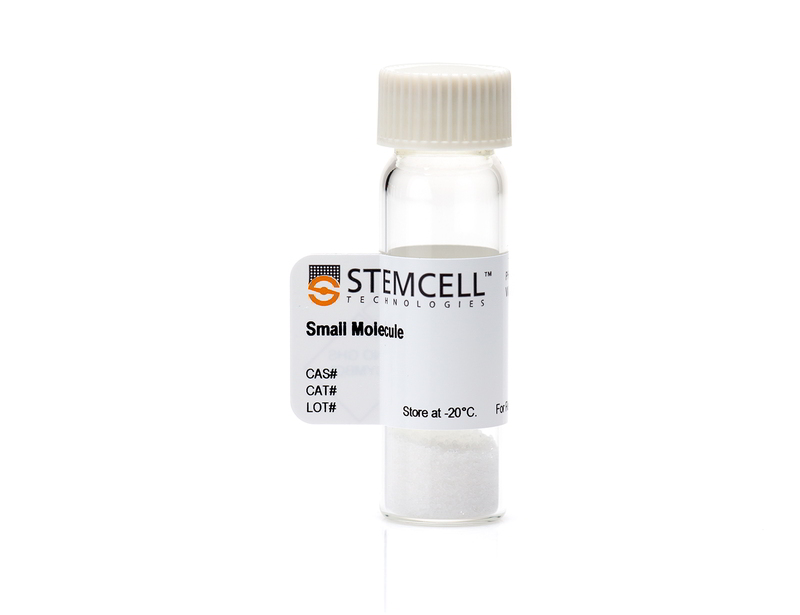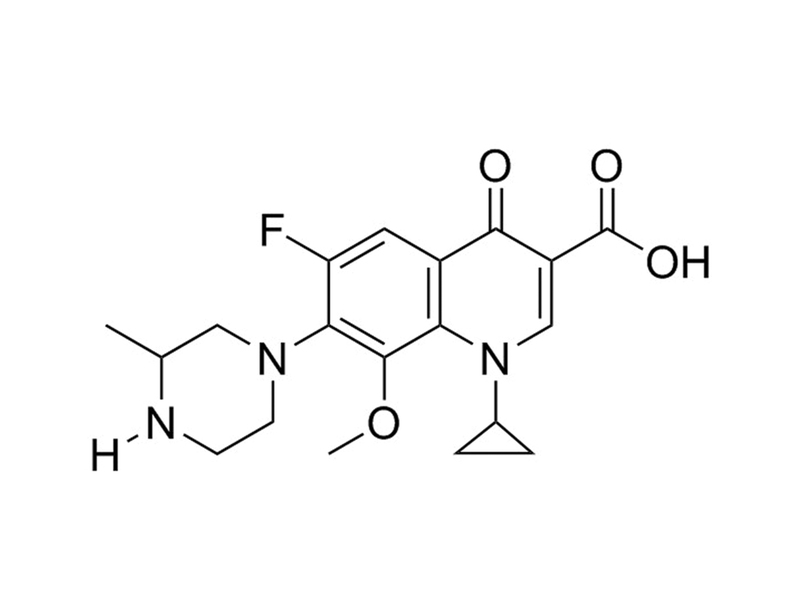Gatifloxacin
Antibiotic; Inhibits bacterial DNA gyrase and topoisomerase IV
概要
Gatifloxacin is a fluoroquinolone antibiotic which inhibits bacterial DNA gyrase (IC₅₀ = 0.109 µg/ml) and topoisomerase IV (IC₅₀ = 13.8 µg/ml; Takei et al.). It is much less effective against HeLa cell topoisomerase II (IC₅₀ = 265 µg/ml; Takei et al.).
MAINTENANCE AND SELF-RENEWAL
· Promotes self-renewal in cultured human and mouse embryonic stem cells (Desbordes et al.).
MAINTENANCE AND SELF-RENEWAL
· Promotes self-renewal in cultured human and mouse embryonic stem cells (Desbordes et al.).
Alternative Names
AM 1155; BMS 206584-01; PD 135432
Cell Type
Pluripotent Stem Cells
Species
Human, Mouse, Rat, Non-Human Primate, Other
Application
Antibiotic, Expansion, Maintenance
Area of Interest
Stem Cell Biology
CAS Number
112811-59-3
Chemical Formula
C₁₉H₂₂FN₃O₄
Molecular Weight
375.4 g/mol
Purity
≥ 98%
技术资料
| Document Type | 产品名称 | Catalog # | Lot # | 语言 |
|---|---|---|---|---|
| Product Information Sheet | Gatifloxacin | 72752 | All | English |
| Safety Data Sheet | Gatifloxacin | 72752 | All | English |
数据及文献
Publications (2)
Cell stem cell 2008 JUN
High-throughput screening assay for the identification of compounds regulating self-renewal and differentiation in human embryonic stem cells.
Abstract
Abstract
High-throughput screening (HTS) of chemical libraries has become a critical tool in basic biology and drug discovery. However, its implementation and the adaptation of high-content assays to human embryonic stem cells (hESCs) have been hampered by multiple technical challenges. Here we present a strategy to adapt hESCs to HTS conditions, resulting in an assay suitable for the discovery of small molecules that drive hESC self-renewal or differentiation. Use of this new assay has led to the identification of several marketed drugs and natural compounds promoting short-term hESC maintenance and compounds directing early lineage choice during differentiation. Global gene expression analysis upon drug treatment defines known and novel pathways correlated to hESC self-renewal and differentiation. Our results demonstrate feasibility of hESC-based HTS and enhance the repertoire of chemical compounds for manipulating hESC fate. The availability of high-content assays should accelerate progress in basic and translational hESC biology.
Antimicrobial agents and chemotherapy 1998 OCT
Inhibitory activities of gatifloxacin (AM-1155), a newly developed fluoroquinolone, against bacterial and mammalian type II topoisomerases.
Abstract
Abstract
We determined the inhibitory activities of gatifloxacin against Staphylococcus aureus topoisomerase IV, Escherichia coli DNA gyrase, and HeLa cell topoisomerase II and compared them with those of several quinolones. The inhibitory activities of quinolones against these type II topoisomerases significantly correlated with their antibacterial activities or cytotoxicities (correlation coefficient [r] = 0.926 for S. aureus, r = 0.972 for E. coli, and r = 0.648 for HeLa cells). Gatifloxacin possessed potent inhibitory activities against bacterial type II topoisomerases (50% inhibitory concentration [IC50] = 13.8 microg/ml for S. aureus topoisomerase IV; IC50 = 0.109 microg/ml for E. coli DNA gyrase) but the lowest activity against HeLa cell topoisomerase II (IC50 = 265 microg/ml) among the quinolones tested. There was also a significant correlation between the inhibitory activities of quinolones against S. aureus topoisomerase IV and those against E. coli DNA gyrase (r = 0.969). However, the inhibitory activity against HeLa cell topoisomerase II did not correlate with that against either bacterial enzyme. The IC50 of gatifloxacin for HeLa cell topoisomerase II was 19 and was more than 2,400 times higher than that for S. aureus topoisomerase IV and that for E. coli DNA gyrase. These ratios were higher than those for other quinolones, indicating that gatifloxacin possesses a higher selectivity for bacterial type II topoisomerases.



